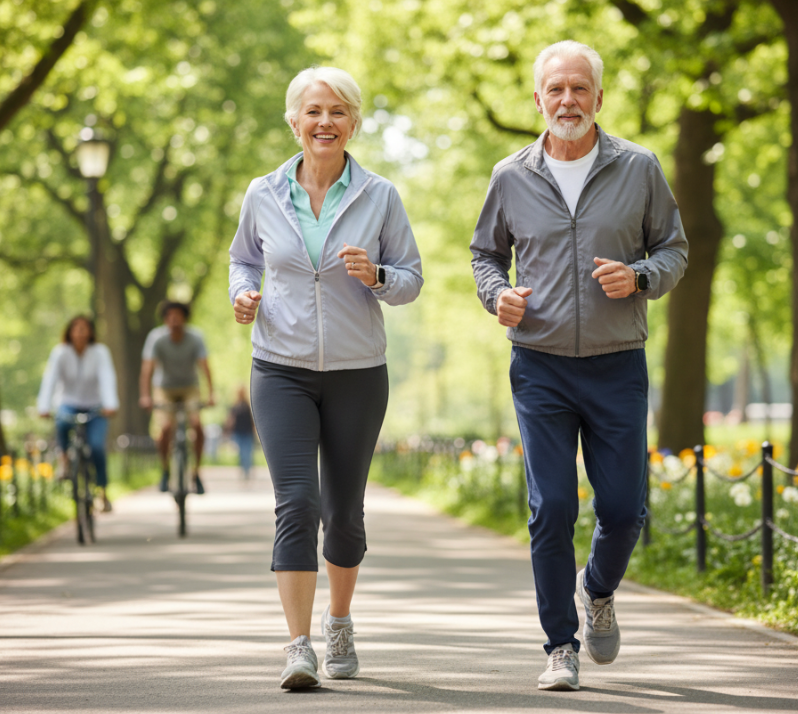Proven Strategies to Prevent Fractures and Manage Bone Loss
- Jennifer Gusto
- Sep 27
- 4 min read
Bone density naturally declines with age, and the pace of this loss increases after menopause due to lower estrogen levels. Gradually, these changes affect the strength and structure of bones, making them less resilient over time.
The encouraging news is that bone density can be protected and even improved with the right strategies. Nutrition, exercise, and lifestyle habits play central roles, and medical treatments are available for those at higher risk.
By understanding how bones change after 50 and taking consistent steps to support them, women can preserve skeletal strength and maintain long-term bone health.
Nutrition: Key Nutrients for Bone Strength

Calcium and Vitamin D
Calcium is the main mineral in bone, while vitamin D enables calcium absorption and bone mineralization. Women over 50 should aim for 1,000–1,200 mg of calcium and 800–1,000 IU of vitamin D daily.
Calcium sources: dairy products, fortified plant-based milks, leafy greens, almonds, and sesame seeds.
Vitamin D sources: fatty fish (such as salmon and mackerel), egg yolks, fortified foods, sunlight, and supplements when indicated.
Protein
Adequate protein intake supports both bone matrix and muscle tissue. Stronger muscles provide better balance and reduce fall risk. Aim for 1–1.2 g of protein per kilogram of body weight per day.
Other Nutrients
Magnesium (nuts, whole grains, spinach) assists vitamin D activation.
Vitamin K (green leafy vegetables) regulates calcium placement.
Potassium (fruits, vegetables) reduces calcium loss.
Omega-3 fatty acids (fish, walnuts, flaxseeds) support bone formation and reduce inflammation.
What to Limit
Just as certain nutrients strengthen bones, some dietary and lifestyle factors can undermine bone health when consumed in excess. These habits don’t need to be eliminated entirely, but managing them carefully helps ensure that the positive steps you take with diet and exercise aren’t counteracted.
Sodium: High intake increases calcium excretion. Limit processed foods and added salt.
Caffeine: Keep coffee and tea moderate (≤3 cups per day).
Alcohol: More than one drink per day is linked with higher fracture risk.
Smoking: Directly accelerates bone loss and impairs healing.
Exercise: Physical Activity to Support Bone Density

Bone tissue responds positively to the right types of stress. Exercise is one of the most effective non-medication strategies for maintaining bone health.
Weight-Bearing Exercise
Activities such as walking, stair climbing, dancing, and tennis stimulate bone formation through gravitational stress.
Resistance Training
Strength training with free weights, machines, or resistance bands helps build both muscle and bone, reduces fall risk, and supports balance. Aim for two to three sessions per week targeting major muscle groups.
Balance and Posture Training
Falls are the leading cause of fractures in older adults. Incorporating balance exercises — such as Tai Chi, yoga, or standing stability drills — reduces the likelihood of falls.
Exercise Modifications for Osteoporosis
Individuals with low bone density should avoid high-impact activities, twisting movements, or forward-bending exercises that increase fracture risk. Programs should be tailored with professional guidance.
Lifestyle Choices: Everyday Steps to Reduce Risk
Maintain a healthy weight: Being underweight (BMI <19) increases fracture risk.
Ensure safe sun exposure: About 15 minutes daily supports vitamin D production, though supplementation is often required in northern climates.
Avoid smoking and limit alcohol: Both have direct negative effects on bone.
Fall prevention strategies: Improve lighting, remove tripping hazards, wear supportive shoes, and consider assistive devices if balance is impaired.
Menopause and Bone Health: Medical Approaches
Estrogen and Bone Loss
Estrogen protects bone density. Its decline after menopause is a primary driver of osteoporosis in women.
Menopausal Hormone Therapy (MHT)
MHT has been shown to improve bone mineral density and reduce fracture risk. However, it carries potential risks, including cardiovascular events and certain cancers, and should be considered only after a thorough discussion with a healthcare provider.
Non-Hormonal Medications
For women who cannot or choose not to use MHT, several effective medications are available:
Bisphosphonates (e.g., alendronate, risedronate) slow bone breakdown.
Denosumab reduces bone resorption by inhibiting specific cellular pathways.
Raloxifene mimics estrogen’s protective effect on bone without some of the associated risks.
Bone Density Testing
A DEXA scan (dual-energy X-ray absorptiometry) is the standard test to evaluate bone mineral density. Women over 65, and those over 50 with additional risk factors, should discuss screening with their healthcare provider.
Summary
Bone health after 50 requires a multifaceted approach. Evidence supports the following strategies:
Consuming adequate calcium, vitamin D, protein, and other bone-supportive nutrients.
Engaging in regular weight-bearing, resistance, and balance exercises.
Avoiding smoking, limiting alcohol, and maintaining a healthy weight.
Implementing fall prevention measures at home and in daily routines.
Considering medical therapies, including hormone therapy or non-hormonal medications, when appropriate.
Working with a healthcare professional ensures that these strategies are personalized to individual risk factors and medical history. With consistent attention to diet, exercise, lifestyle, and medical care, women over 50 can reduce fracture risk and maintain bone strength well into later life.
Disclaimer: The content on The Women’s Insider is for informational purposes only and should not be considered medical, health, or professional advice. Always consult a qualified healthcare provider before making changes to your health, diet, or lifestyle. Some articles may contain affiliate links, which means we may earn a small commission if you make a purchase through them, at no extra cost to you. This helps support our work so we can continue to provide free content.



Comments